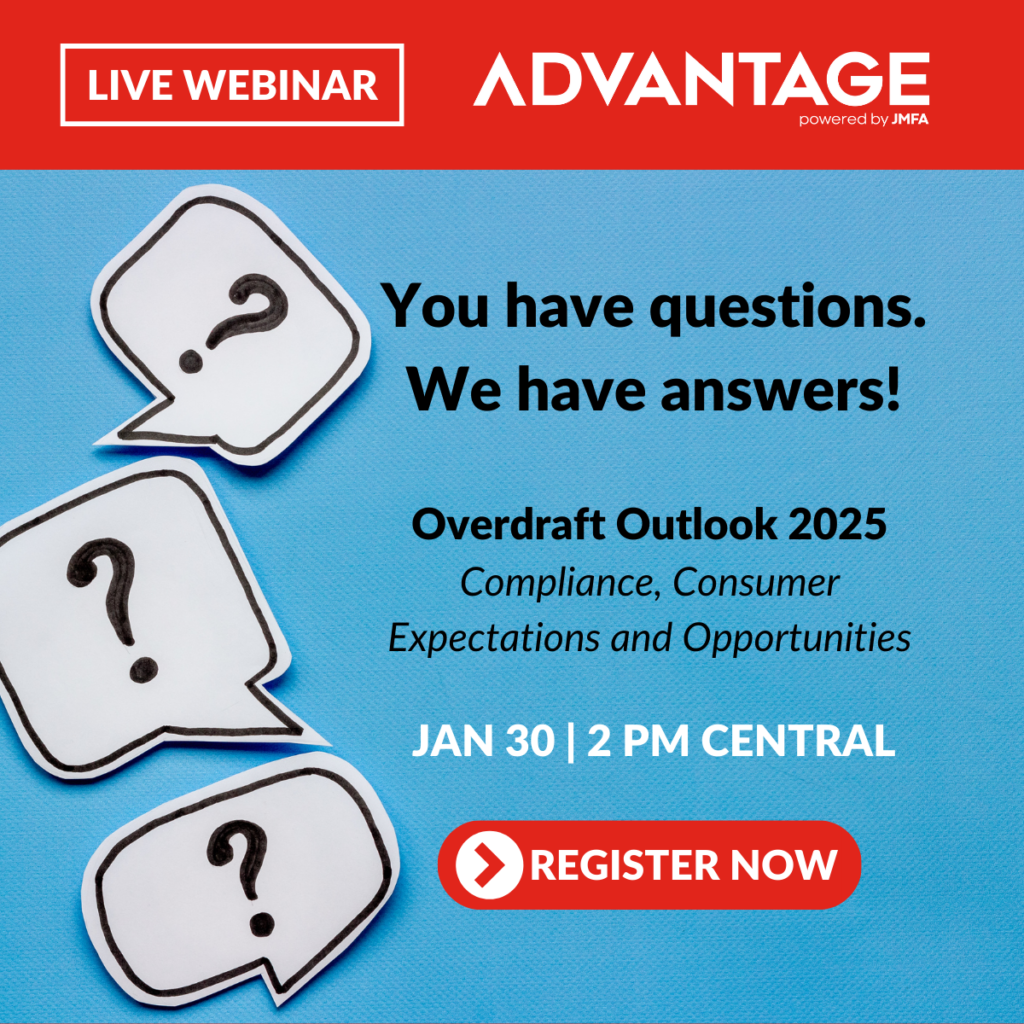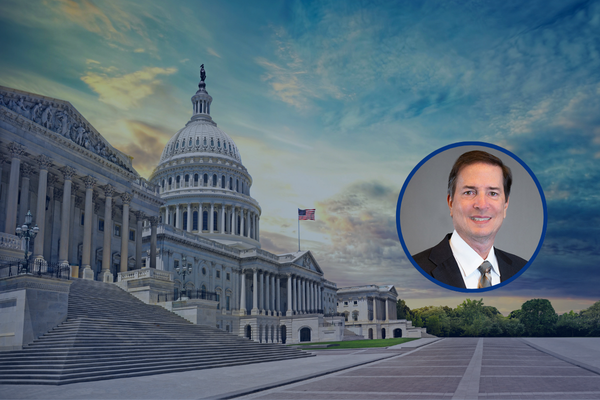
Why Your Overdraft Strategy is the Key to Growth
Categories:
From Compliance to Consumer Confidence, Discover Opportunities for 2025
Overdraft programs have long been a cornerstone of the financial services industry, providing a vital safety net for consumers facing unexpected expenses. Yet, in recent years, these programs have come under increasing scrutiny. Regulatory agencies, including the CFPB, have zeroed in on abusive and deceptive practices, demanding greater accountability from all financial institutions.
As we step into 2025, the stakes for overdraft programs have never been higher. In December 2024, the CFPB released its long-anticipated proposal, setting clear expectations for fairness, transparency, and consumer protection. While the proposal is likely to face opposition and debate, its message is clear: financial institutions must modernize their overdraft programs, ensuring they align with both regulatory requirements and the needs of their account holders.

LIVE WEBINAR
Check out “Overdraft Outlook 2025” for actionable insights and practical steps for creating a consumer-friendly overdraft program that drives growth and strengthens relationships.
Turning Regulatory Challenges into Opportunities
The regulatory momentum of 2024 acted as a wake-up call for many financial institutions. In response to heightened scrutiny, some took proactive measures to re-evaluate their overdraft strategies, identifying gaps and implementing meaningful changes. These forward-thinking institutions recognized the importance of aligning their programs with evolving expectations, focusing on transparency, education, and fair fee structures.
However, not all were as proactive. Many adopted a “wait and see” approach, delaying action until a final regulatory framework was in place. While this approach may have seemed prudent at the time, addressing overdraft practices is a real opportunity. It’s true the December 2024 CFPB rule is expected to be met with significant opposition. However, it underscores the urgency of addressing gaps in overdraft practices and turning them into wins. Continuing to delay only compounds the risk of falling behind in compliance with best practices, losing consumer trust, and jeopardizing long-term financial stability.
Four Reasons Overdraft Programs Deserve Attention in 2025
Beyond compliance, overdraft programs offer a significant opportunity for community financial institutions to build stronger relationships with account holders. By adopting a strategic and consumer-centric approach, there is an opportunity to transform overdraft services into a powerful tool for achieving service goals and growth.
Here’s why overdrafts should be a top priority in 2025:
1. Strengthening Consumer Trust
For many account holders, overdraft programs are more than a convenience—they’re a critical lifeline during financial uncertainty. However, trust is fragile. Hidden fees and unclear terms can quickly erode confidence in your institution. By prioritizing transparency and providing accessible education, your overdraft program symbolizes fairness and reliability, fostering stronger, longer-lasting relationships with account holders.
2. Driving Account Holder Retention
Financial institutions operate in an increasingly competitive market where consumer loyalty is hard to earn and easy to lose. Overdraft programs that provide flexibility and transparency can set an institution apart, helping to reduce attrition and attract new relationships.
3. Protecting Non-Interest Income
While regulatory changes may necessitate adjustments to fee structures, overdraft programs remain a critical source of non-interest income for many institutions. By aligning these programs with best practices, institutions can protect this revenue stream while avoiding reputational risks associated with outdated practices.
4. Meeting Evolving Expectations
Consumers today demand more from their financial institutions. They expect personalized solutions, fair practices, and proactive communication. A well-designed overdraft program that aligns with these expectations can position your institution as a leader in the industry.
Takeaways from the CFPB Final Rule on Overdrafts
While the future of the bureau’s final rule is still uncertain, it provides clear direction for financial institutions to address gaps in compliance and strategy. It offers a roadmap for creating programs that are not only compliant but also consumer-focused. Key takeaways from the proposal include:
- Transparency is Non-Negotiable: Clear disclosures about fees, limits, and terms are essential.
- Opt-In Processes Must Be Clear and Consistent: Regulators continue to emphasize the importance of ensuring that account holders fully understand their options.
- Education is Key: Providing resources and training for both staff and account holders is critical to building trust and reducing disputes.
Embracing these principles will not only address regulatory expectations but also create programs that truly serve their account holders’ needs.
Be Part of the Solution
Waiting is no longer an option. The regulatory landscape is shifting, and institutions that fail to adapt risk falling behind. By prioritizing a consumer-centric approach to overdraft programs, financial institutions can:
- Build trust and loyalty with their account holders.
- Differentiate themselves in a competitive market.
- Ensure compliance with evolving regulatory expectations.
- Strengthen long-term revenue goals.
You can lead the way in delivering responsible, consumer-focused solutions. Not only can this ensure compliance with evolving regulatory expectations, but it can also build trust, enhance account holder relationships, and secure long-term growth. Embrace the chance to innovate, adapt, and thrive in 2025 and beyond.
Contact your local representative to learn more about offering a consumer-first overdraft program.
About ADVANTAGE, powered by JMFA
ADVANTAGE empowers community financial institutions with strategic solutions to drive growth and success. Our comprehensive services include overdraft program compliance, account acquisition strategies, contract negotiation expertise, and technology strategy consulting. With 40-plus years of supporting community banks and credit unions nationwide, we’re dedicated to delivering exceptional results and fostering long-term partnerships. Choose ADVANTAGE to enhance performance, unlock new opportunities, and build lasting value.
Want to stay connected with our latest insights? Subscribe by visiting advantage-fi.com/newsletter.




